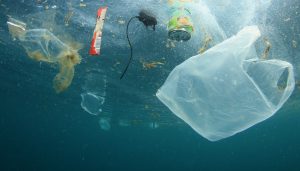Mysterious Craters in the Seafloor Were Likely Formed by Garbage, Scientists Say
Scientists were investigating the cause of “pockmarks” on the seafloor when they made an unsettling discovery: thousands of mini-craters, apparently formed by garbage.
While surveying the seafloor off the coast of Big Sur, California, a team of scientists has made a bizarre and depressing discovery: thousands of miniature craters, many of which appear to have been formed by human garbage.
These trash craters, more formally known as “micro-depressions,” were spotted during a series of underwater autonomous vehicle (AUV) surveys led by the Monterey Bay Aquarium Research Institute (MBARI) in 2018 and 2019. Eve Lundsten, who presented the findings at the American Geophysical Union annual meeting in San Francisco today, said the discovery was totally unexpected. The team hadn’t sent its AUVs out to study garbage, but rather to elucidate the origins of a cluster of much larger seafloor craters in the same region that comprise North America’s biggest “pockmark field”.
“The trash was a surprise,” Lundsten said in an interview after her presentation. “We were not expecting to see trash.”
Scientists from MBARI caught their first whiff of the pockmark field—a region of the continental shelf featuring craters that are hundreds of feet wide and about 15 feet deep on average—during a 1999 shipboard survey. For more than a decade, the pockmarks remained a mystery. But in recent years, scientists have been redoubling their efforts to understand the features, following a surge of commercial interest in placing a floating offshore wind farm in these waters. In 2017, the National Oceanic Atmospheric Administration led a comprehensive mapping survey of the seafloor off Big Sur. Combining NOAA’s results with the earlier MBARI work, scientists now know there are around 5,200 pockmarks scattered across a 500 square-mile swath of seafloor.
In 2018, MBARI began a series of underwater robotic surveys in order to study the pockmarks in more detail. During the survey they came across a family of much smaller micro-depressions that are “completely unique,” according to Lundsten. These mini craters, which are about 35 feet wide and three feet deep on average, were roughly three times more abundant than their bigger crater cousins. Lundsten and her colleagues estimate there are about 15,000 of micro-depressions scattered across the pockmark field.



